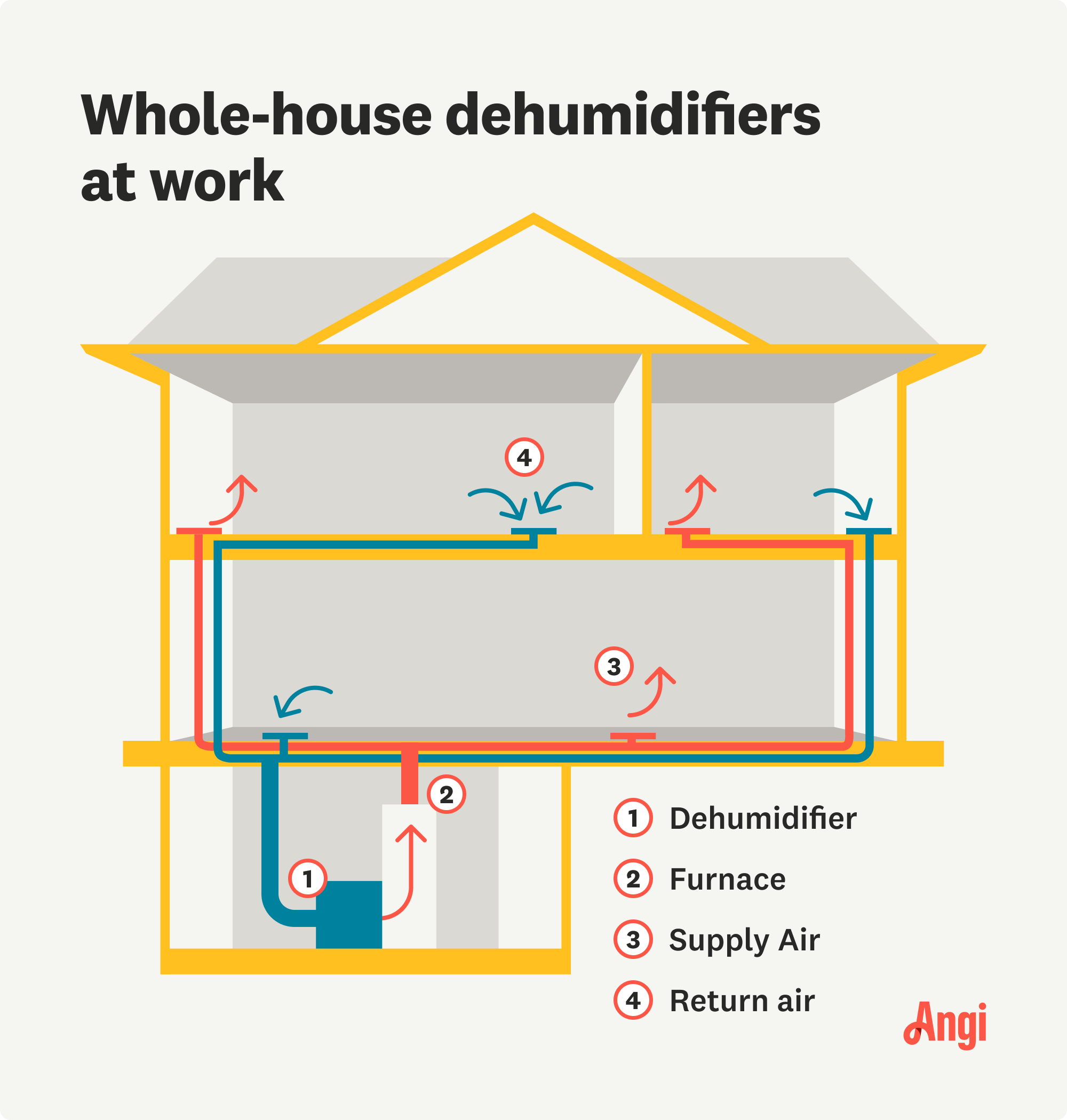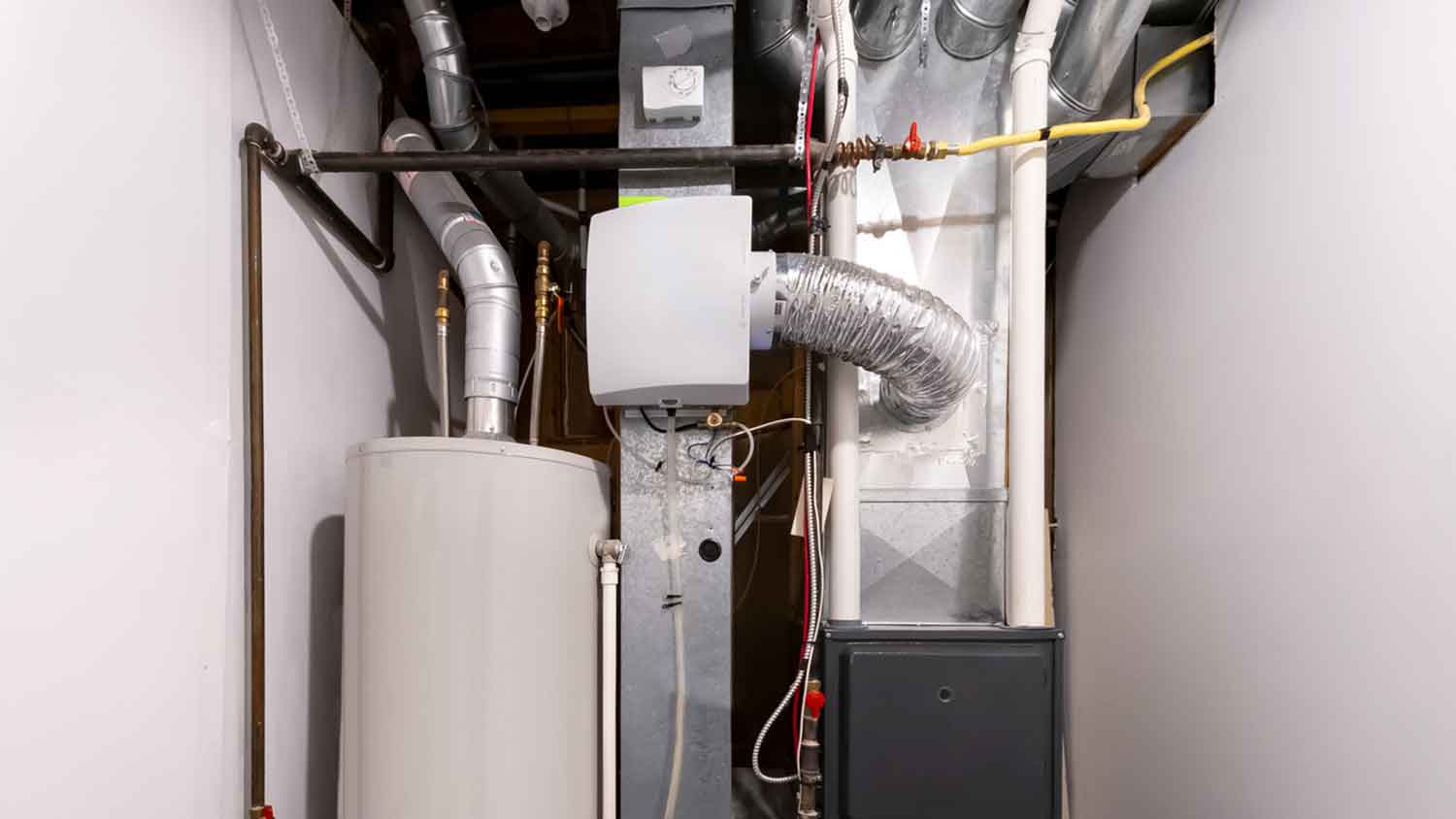
When you’re looking for a way to keep warm this winter, check out outdoor wood furnace prices based on size, installation, and other cost factors.
A whole-home humidity solution could be right around the corner


Whole-house dehumidifiers are installed as part of a home’s HVAC system to quickly dry out large amounts of air.
The best place to install a whole-house dehumidifier is next to central HVAC units and fan systems like the furnace or air conditioner.
Whole-house dehumidifiers need access to ductwork, but they don’t require a furnace and are not installed directly onto a furnace.
If your house and health have been suffering from high humidity, the most effective long-term solution is a dehumidifier. But can a dehumidifier be added to a furnace? Yes, a whole-house dehumidifier, installed near central HVAC (heating, ventilation, and air conditioning) units like your furnace, is an effective way to keep humidity levels in check. Let’s go over how adding a dehumidifier to a furnace works and what you should know about choosing a location.

When people talk about adding a dehumidifier to a furnace, they mean installing a whole-house dehumidifier near important HVAC units, notably close to the fan system that circulates air through ductwork around a house.
Whole-house dehumidifiers are installed near or even inside ductwork at these locations, usually mounted to the roof with sturdy supports and tapped into the ductwork’s airflow. That enables them to constantly remove water from the air as it passes through the HVAC system, like when the air is being heated by a furnace.
These permanent dehumidifiers typically require a drain pipe to dispose of water, as well as access to power (they may require an additional circuit breaker, for example). When homeowners plan an installation, they often find that one of the most convenient locations is near the furnace, air conditioner unit, or a similar spot. These locations are already in handy places like the garage, basement, or utility closet with easy access to everything the dehumidifier needs.

To be clear, you are not installing the dehumidifier inside or on a furnace, or even as an addition to a furnace’s fan system. In fact, most whole-house dehumidifiers need some clearance space of their own, so you probably won’t be installing it very close to any other units. Whole-house dehumidifiers simply work best when placed close to the HVAC airflow.
That means you don’t have to have a furnace to install one of these dehumidifiers. They can work just as well if they’re close to an air conditioner unit, a boiler, a pellet stove, and so on. The only place you can’t install them is next to outdoor units, like a heat pump or an AC condenser.
Ductwork helps a whole-house dehumidifier do its job, which is why many models are designed to be connected to ductwork. If your home doesn’t have ductwork, we suggest looking fora large portable dehumidifier instead of a whole-house model. These larger versions can still move enough water out of the air to help keep a whole house dry and cool, but they don’t need to be permanently installed as a part of your HVAC system.
Not sure what’s best for your home? Contact a local dehumidifier installation pro for advice.
From average costs to expert advice, get all the answers you need to get your job done.

When you’re looking for a way to keep warm this winter, check out outdoor wood furnace prices based on size, installation, and other cost factors.

If your energy bills have increased or your home isn’t as comfortable as it used to be, use this duct sealing cost guide to see how much a solution will total.

A mini-split allows for zoned cooling, helpful for cooling spaces like garages. Learn the cost to install a mini-split unit in a garage with this guide.

A rooftop AC unit isn’t just for commercial properties—but is it the right solution for your home? This guide will show you the pros and cons.

An oversized AC unit can cause indoor humidity and uneven temperatures. Learn how to correct an oversized air conditioner without replacing it.

Understanding common duct sizes for HVAC systems can ensure proper installation for better airflow. Here's what to know about ductwork sizing.